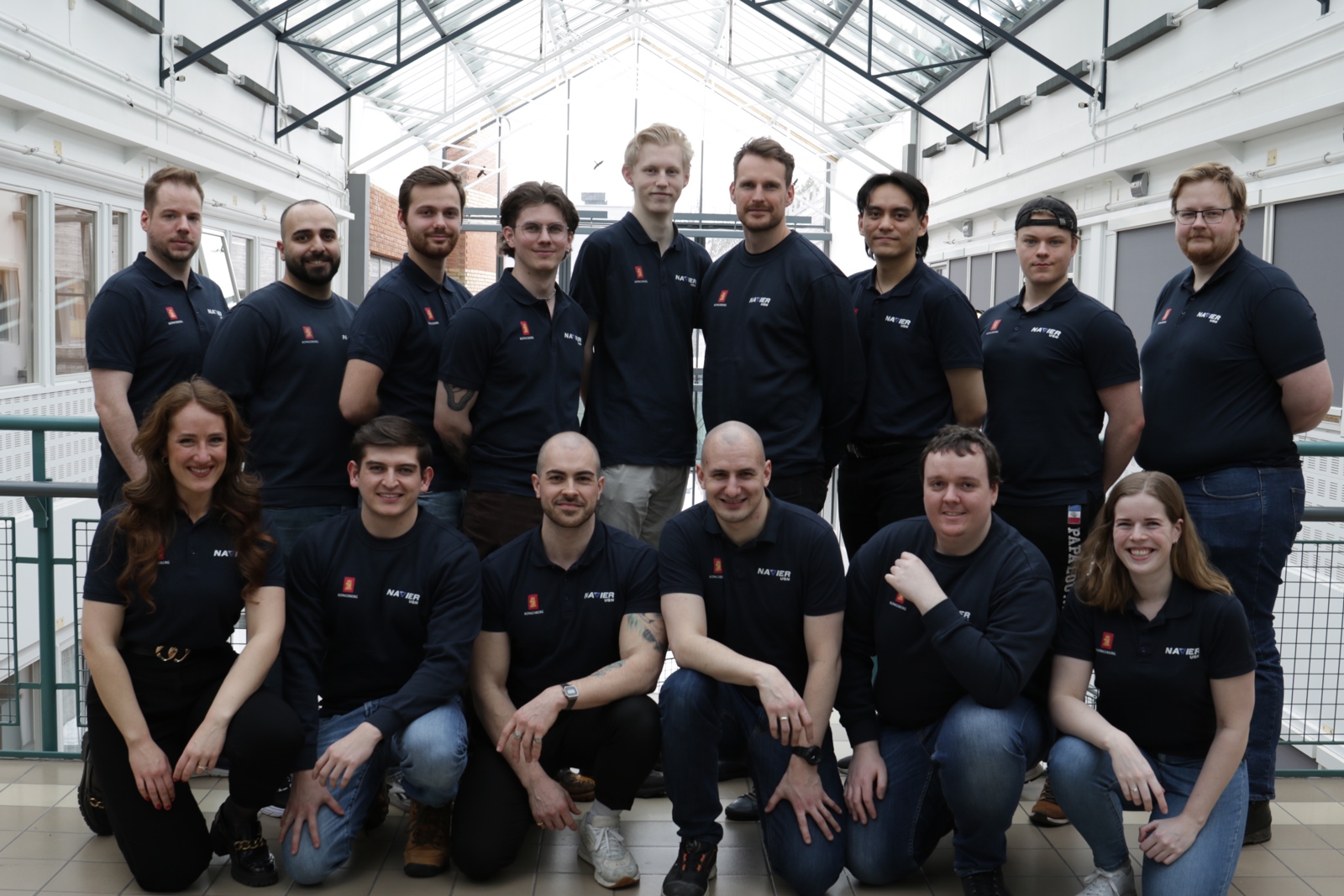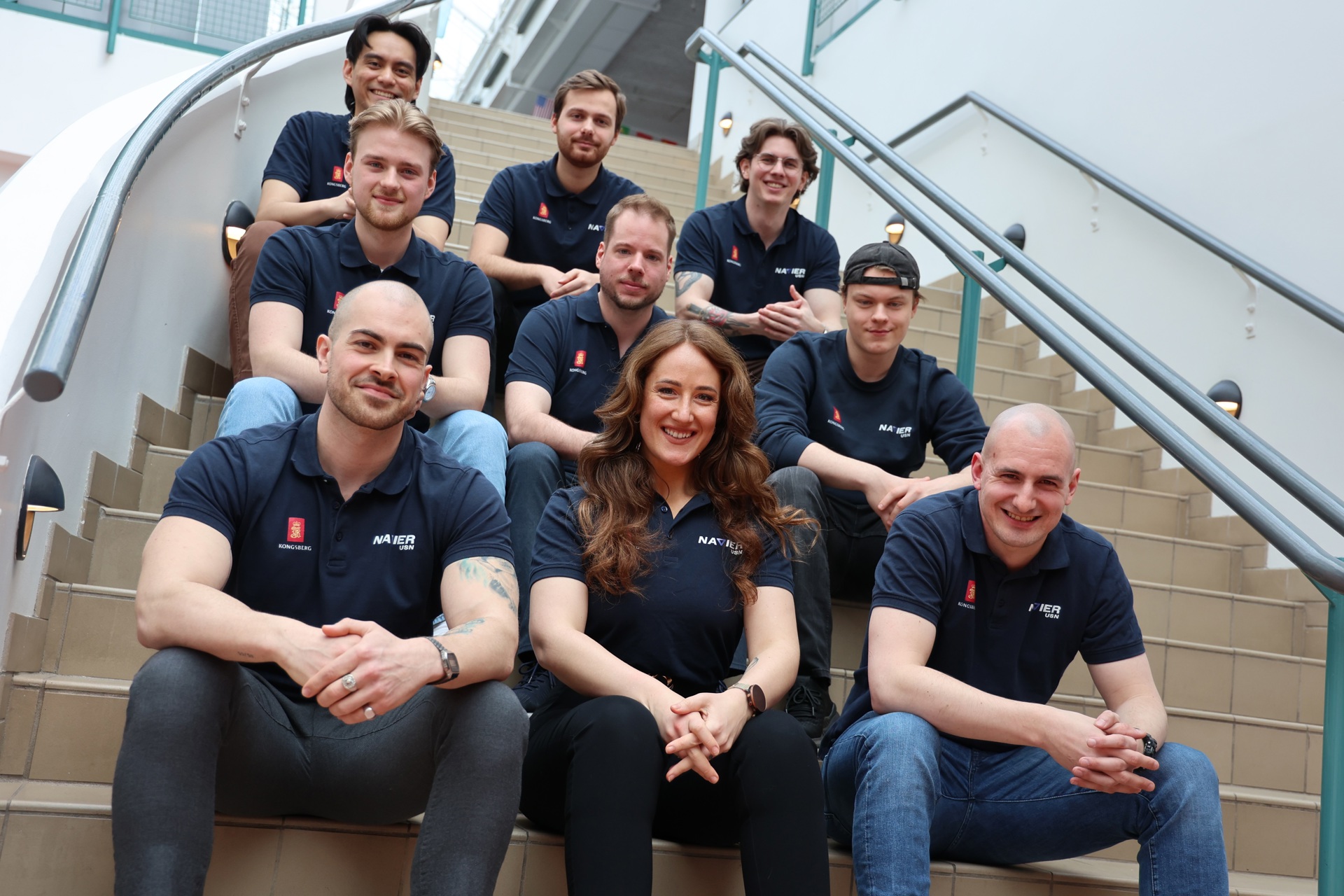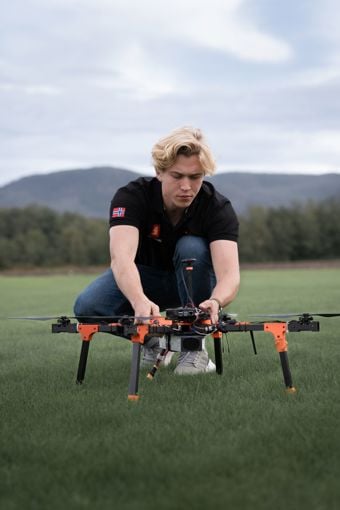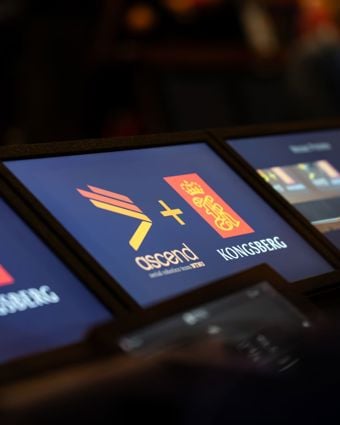
Navigating through waves of innovation
With the goal of participating in the autonomous sea drone's competition, AutoDrone in Horten, the student project Navier USN was founded in October 2022. Six months later, they were ready at the starting line to take on the challenge.
-
Text:Helene Strøm Bergset / KONGSBERG
Photo:Helene Strøm Bergset / KONGSBERG & USN Navier
In a remote location at the University of South-Eastern Norway (USN), Campus Vestfold, 15 enthusiastic students have gathered to explore solutions to challenges related to autonomous sea drones. Since the fall of 2022, the student initiative Navier USN has been developing a sea drone specifically designed for autonomous drone competitions.
From idea to reality
The idea for Navier USN arose after a lecture with Kongsberg Defence & Aerospace and the student project Ascend NTNU.
“During a lecture where Kongsberg Defence & Aerospace and Ascend discussed the initiation of student projects, a representative from Ascend made a strong impression on me when he said: 'If you feel a tingling in your stomach now, just do it.' I looked around the auditorium and made eye contact with a few fellow students, and we all shared the same thought. That moment marked the start of Navier USN,” reflects Aleksander Nordmo, technical project manager and founder of Navier USN.
“From October, we had to make a plan, build a hull, purchase all the components, write the code, and build an organization,” he explains.
After six months of intense work, they were at the starting line of USN's AutoDrone competition in Horten. In the time leading up to the competition, the team had gone through a hectic exam period and faced some challenges with the code.
“Right before the AutoDrone competition, we were working on an issue that had occupied us for a while. We had to figure out how to avoid colliding with other objects,” explains Aleksander.
“The clock approached 02:00 the night before the competition when we finally completed the code. Early in the morning on competition day, we conducted the first test. To our great relief, everything worked as it should! It was an incredibly good feeling,” admits Aleksander.
Just hours after finalizing their code, the Navier USN team triumphed in the AutoDrone competition, exceeding all the goals they had set six months earlier. Their unforgettable victory was the result of many months of hard work, overcoming several challenges along the way.
Kongsberg Defence & Aerospace sponsors Navier USN
Navier USN, a student project at the University of South-Eastern Norway, Campus Vestfold, explores challenges related to autonomous vehicles. Kongsberg Defence & Aerospace sponsors Navier USN with financial resources under a two-year agreement. In addition, the company offers professional and technical support when needed. The development and recruitment of young talent are an essential part of the company's strategy.
“Kongsberg Defence & Aerospace's involvement in student projects is part of a national technology initiative. Norway needs more people with technological expertise to solve tomorrow's challenges,” says Ørjan Stengelsrud, Executive Vice President Business Support at Kongsberg Defence & Aerospace.
Like an armored vehicle
“Whether you are constructing a small or large autonomous vehicle, you face the same challenges,” says Aleksander.
According to the electronics engineering student, the biggest challenge in creating an autonomous sea drone is making it capable of making decisions based on what it detects in its surroundings.
“The first thing we need to have control over is exactly where the vehicle is located. We use various GPS systems and collaborate with Kartverket to ensure accurate positioning of the vehicle.
Furthermore, we need to be aware of what is in the surroundings. We use cameras with various machine learning algorithms to detect buoys and other objects. Additionally, we need to know the distance to the objects around us. This is achieved using lidar sensors, which function similarly to radar but use light beams to measure the distance to detected objects,” he explains.
The project stands out not only for its software development but also for its innovative approach to constructing the vehicle.
Lise Trehjørningen, responsible for product design, has developed the hull with the project's goal of an autonomous platform with a conventional vehicle appearance in mind. The 3D-printed hull, originally intended as a prototype, ended up as the final solution at the start of the competition.
“It's like an armed vehicle,” laughs Aleksander as he points to some usage marks on the hull. He says the sea drone has endured several injuries but has remained in good condition despite this.
The team is now working on completing a new and improved hull for use in future competitions. The new hull is a trimaran that combines the characteristics of both monohull and catamaran hulls, making it unique compared to other autonomous vessels.
“In the mechanical department, we have closely collaborated with the software and hardware teams to create a new vehicle that meets requirements and wishes from various perspectives. Finding a good solution that satisfies everyone's wishes has been both educational and challenging. Additionally, the new hull is significantly larger than the previous one, providing us with more opportunities for component placement and the ability to install new equipment,” admits Lise.
She further explains that one of the goals has been to create a modular vehicle where all parts can be replaced quickly. Additionally, the competitions they participate in have requirements for dimensions, choice of propulsion systems, lifting capabilities from the water, and safety equipment.
“Initially, we wanted to 3D print the hull in ASA (Acrylic Styrene Acrylonitrile), but it proved to be challenging. ASA requires higher and more stable temperatures, and there was a greater risk of things going wrong, which would have put the whole project on hold. Therefore, we decided to print the hull with PLA (Polylactic Acid) and reinforce it with fiberglass, which we have good experience with from the first hull,” elaborates Lise.
Defending Champions
AutoDrone is a competition for autonomous sea drones, organized by Western Norway University of Applied Sciences (HVL), UiT the Arctic University of Norway, the Norwegian University of Science and Technology (NTNU), and the University of South-Eastern Norway (USN). The annual competition was held for the first time in Horten in spring 2020.
On June 6, 2024, Navier USN once again won the AutoDrone competition. The team worked tirelessly in the days leading up to the competition. They set up a workspace at the competition site and used every spare minute to complete and fine-tune the code. Some codes even had to be rewritten in the middle of the competition to tackle unforeseen challenges.
Not only did they defend their title as champions, but they also achieved the highest score in the competition's history!

Victory fuels ambition
The AutoDrone victory sparked enthusiasm among the members of USN Navier, and they recently secured another triumph by winning the "Njord Autonomous Ship Challenge," held at Nyhavna in Trondheim from August 15th to 17th. The team impressed by achieving the highest score in all events and excelled in the evaluations of both their technical report and presentation. They described a demanding week, working diligently from early morning until late at night.
This victory is especially meaningful, as Navier USN was the youngest organization in the competition, with the fewest members and the lowest level of education.
In addition to winning, they decided to share their extensive dataset with Njord and all future participants, aiming to ease the burden of data management and foster innovation.
"By sharing our dataset of around 30,000 images, teams will be able to focus on the actual challenge and have more time to be present during the competition rather than spending time on labeling. We hope this gesture will encourage even more teams to participate next year. After all, why not share knowledge when we all have the same goals?" says project manager Markus Marstad.
Read more on Navier USN Autonomous Ship World Champions - Kongsberg Defence & Aerospace
With support from both USN and KDA, the future looks bright for the enthusiastic students.
“The sponsor contributions allow us to test brand new technology and participate in more competitions, which is incredibly motivating,” says Markus Marstad, project manager and organizational developer at Navier USN.
It's not only their strong competitive drive that motivates them, but also the vibrant social and academic community they have created.
“The project has grown tremendously over the past year and has become increasingly interdisciplinary. As the project developed, there was also a need for skills in marketing, finance, and organizational management,” says Sara Selnes, project manager and organizational developer at Navier USN.
She emphasizes that they prioritize the social community in the project and that an important part of being in the student project is to create well-being and motivation to complete their studies.
“One of our goals is that in 10 years when we return to USN, the project will still be thriving. We envision Navier USN continuing to enhance the student culture and environment for many years to come,” concludes Aleksander.


